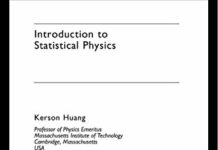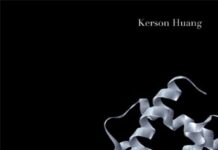
Ebook Info
- Published: 2010
- Number of pages: 438 pages
- Format: PDF
- File Size: 5.94 MB
- Authors: Kerson Huang
Description
A new, updated and enhanced edition of the classic work, which was welcomed for its general approach and self-sustaining organization of the chapters. Written by a highly respected textbook writer and researcher, this book has a more general scope and adopts a more practical approach than other books. It includes applications of condensed matter physics, first developing traditional concepts, including Feynman graphs, before moving on to such key topics as functional integrals, statistical mechanics and Wilson’s renormalization group. The author takes care to explain the connection between the latter and conventional perturbative renormalization. Due to the rapid advance and increase in importance of low dimensional systems, this second edition fills a gap in the market with its added discussions of low dimensional systems, including one-dimensional conductors. All the chapters have been revised, while more clarifying explanations and problems have been added. A FREE SOLUTIONS MANUAL is available for lecturers from www.wiley-vch.de/textbooks.
User’s Reviews
Editorial Reviews: Review “The description of low dimensional systems, e.g. one-dimensional conductors, is added. Moreover, in the appendix C, Polchinski’s renormation equation is derived, solved and applied to the asymptotically free scalar field.” (Zentralblatt MATH, 2010) “Written by a highly respected textbook writer and researcher, this book has a more general scope and adopts a more practical approach than other books.” (ETDE – Energy Database, 2010) About the Author Kerson Huang is Professor of Physics at the Massachusetts Institute of Technology, Cambridge, USA, and a leading authority on quantum physics. He is a highly experienced textbook writer and has written (among other books) Statistical Mechanics, also published by Wiley. Professor Huang?s research interests focus on Bose-Einstein condensates and non-renormalizable theories.
Reviews from Amazon users which were colected at the time this book was published on the website:
⭐Kerson Huang has been a well known researcher in the ranks of MIT (he is now retired with an emeritus status). His books are full of great material but plagued by the same problem: They are not thoroughly proof-read before publication and various typos survive at print.In particular, for the present book on Quantum Field Theory (QFT): It is a really good reading for those who want to learn the topic through a simple, straightforward presentation. The chapters are not too long; not too short either. The typesetting is really good and the printing not dense, so it allows a comfortable and pleasant studying. I do disagree in several places with the author’s choice of ordering the material (e.g in the description of the various aspects of the Dirac field and its quantization) and I do feel that in other places the presentation could be improved and refined (e.g. in the chapter of relativistic fields where the author presents the relation of fields to the theory of relativity). However, I must recognize that in writing a book, an author must make some hard choices. Huang tries to give a relative short and clear presentation and this must come at the expense of rigor — a few shortcuts must be adopted.One issue that has to do with the author’s choice of presentation but which a prospective reader should be aware of is that Huang chooses to present QFT through canonical quantization. Path integrals, which have become the ubiquitous means for quantization, are introduced late in the book. Hence, if your goal is to understand QFT through the path integral formalism from the very beginning, this is not and it should not be your first reading. My personal preference has always been a presentation using path integrals but I must confess that I do like Huang’s book. It is more useful to those students who may have not seen these topics again.The worst problem with Huang’s book on QFT is the numerous typos. There is at least one per page, ofter many in each page! Most of them are easy to detect and introduce no difficulty in understanding the material. In fact, those people who are familiar with LaTeX will realize that many of the typos are due to mistakes in LaTeX commands or due to copying and pasting material from one place to another. Only some typos might create some confusion to those who learn the topic. (An example of such typo is a missing `not’ in the sentence of the PCT theorem in page 136.) Unfortunately the abundance of mistakes is annoying and shows some irresponsibility of such a highly respected faculty. Hence, the book cannot be given a grade higher than average.Overall, this book has the qualities to be a perfect one; hopefully an updated edition will be published soon. Even in its current state, it is still a good book and a student learning the material (who does all the calculations) will benefit from it.
⭐This is an amazingly intuitive presentation of quantum field theory. I am a quantum field theorist and Dr. Huang’s writing has taught me a lot over the years (including using his Stat Mech textbook in graduate school). The few typos that exist only lead to further understanding. As the title says, the book starts from the canonical operator approach with fields being an infinite set of coupled oscillators, then carefully derives their quantum representation, and finally shows the connection to path integrals from first principles (with ample applications). I especially like his clear explanation of renormalization theory from Wilson’s point of view of flowing couplings, fixed points, and crossovers. Both of Huang’s aforementioned texts are worth it just for that.
⭐Das Buch gibt eine gute Übersicht zu den wesentlichen Themen der Quantenfeldtheorie. Auch wenn man nach dem Studium der Physik nicht mehr aktiv in dem Gebiet arbeitet, wie es für mich zutrifft, ist es eine Freude diese Dinge in Ruhe nochmal zu lesen und als Entspannungsübung ein paar Probleme zu rechnen. Ich würde das Buch natürlich auch jedem engagierten Studenten empfehlen.
Keywords
Free Download Quantum Field Theory: From Operators to Path Integrals 2nd Edition in PDF format
Quantum Field Theory: From Operators to Path Integrals 2nd Edition PDF Free Download
Download Quantum Field Theory: From Operators to Path Integrals 2nd Edition 2010 PDF Free
Quantum Field Theory: From Operators to Path Integrals 2nd Edition 2010 PDF Free Download
Download Quantum Field Theory: From Operators to Path Integrals 2nd Edition PDF
Free Download Ebook Quantum Field Theory: From Operators to Path Integrals 2nd Edition



